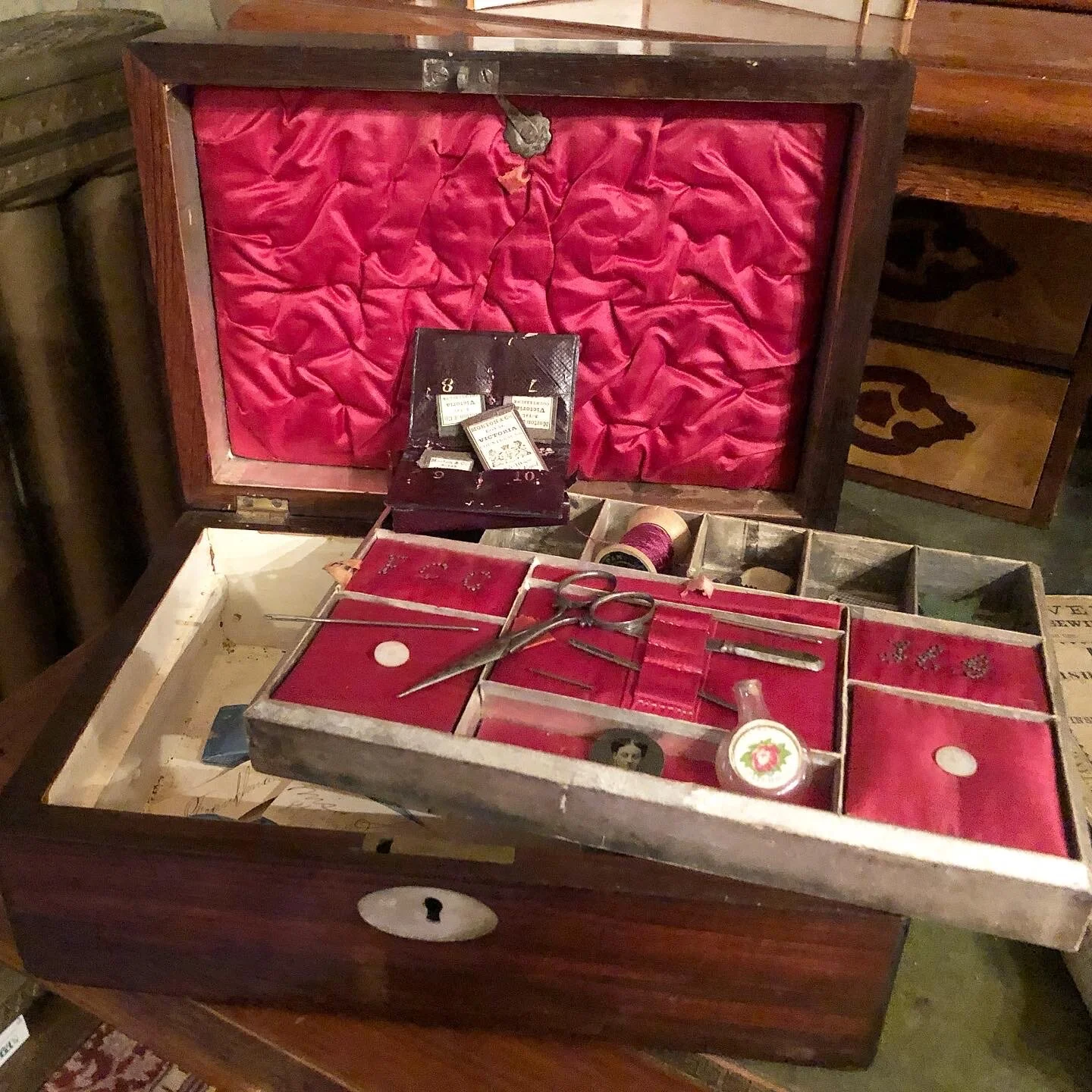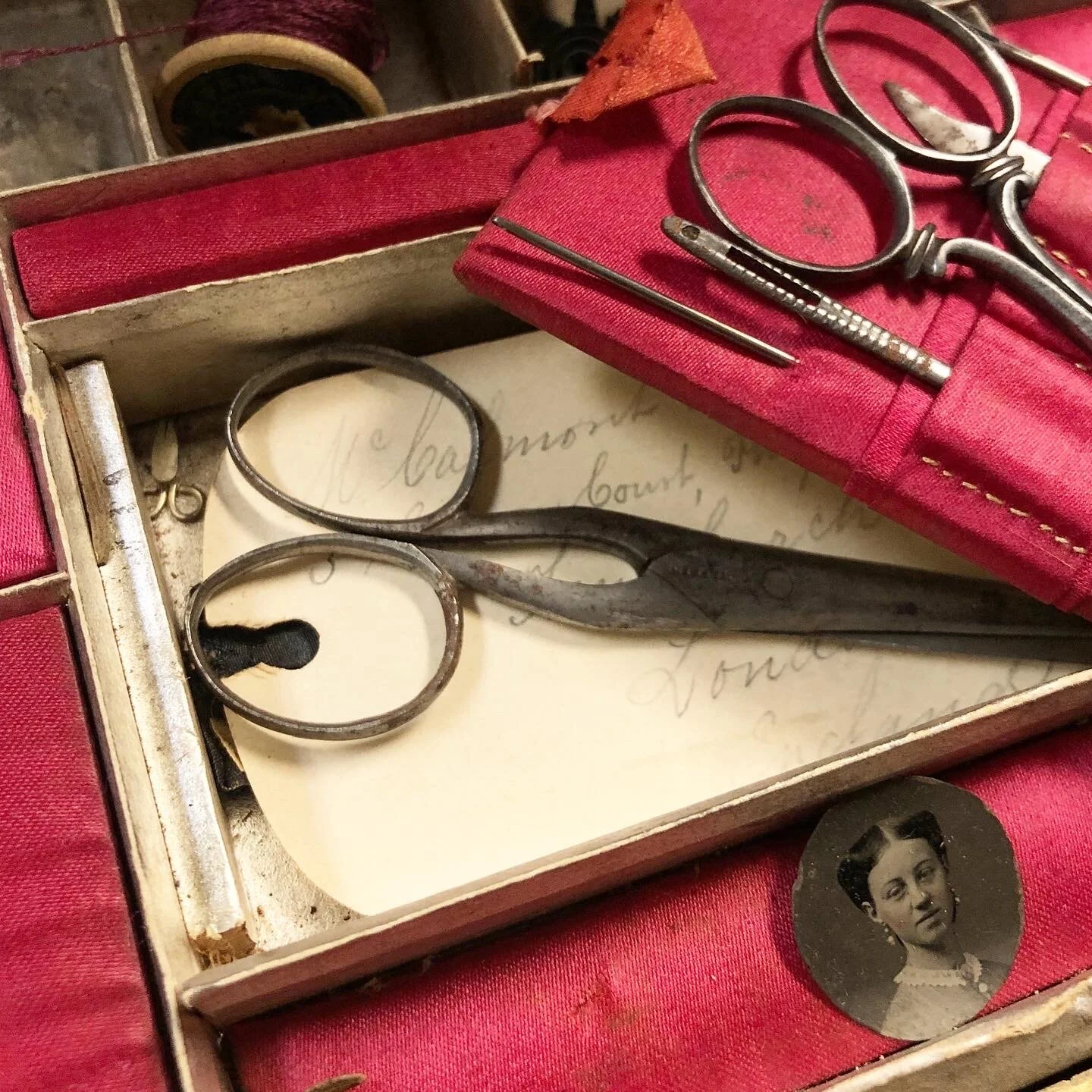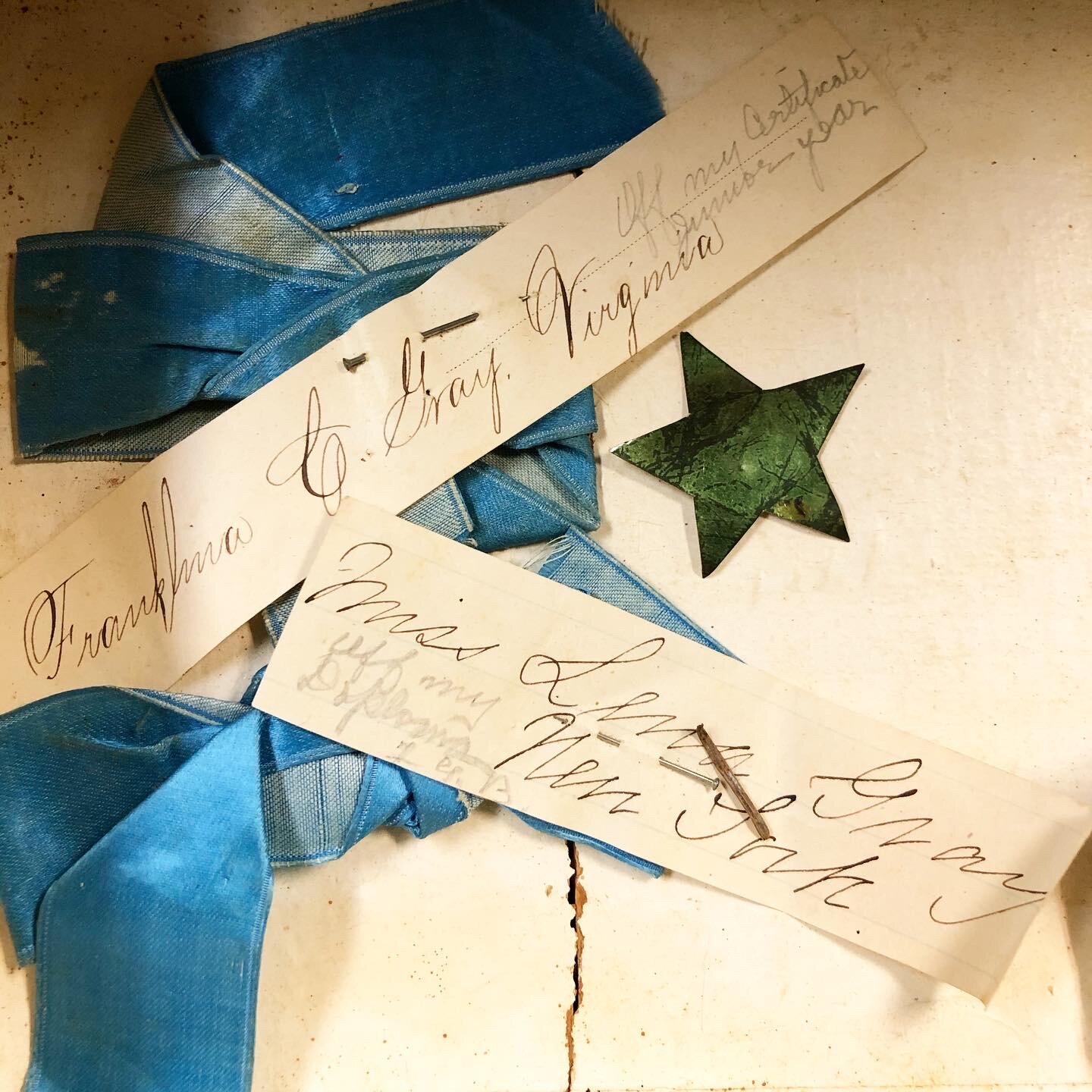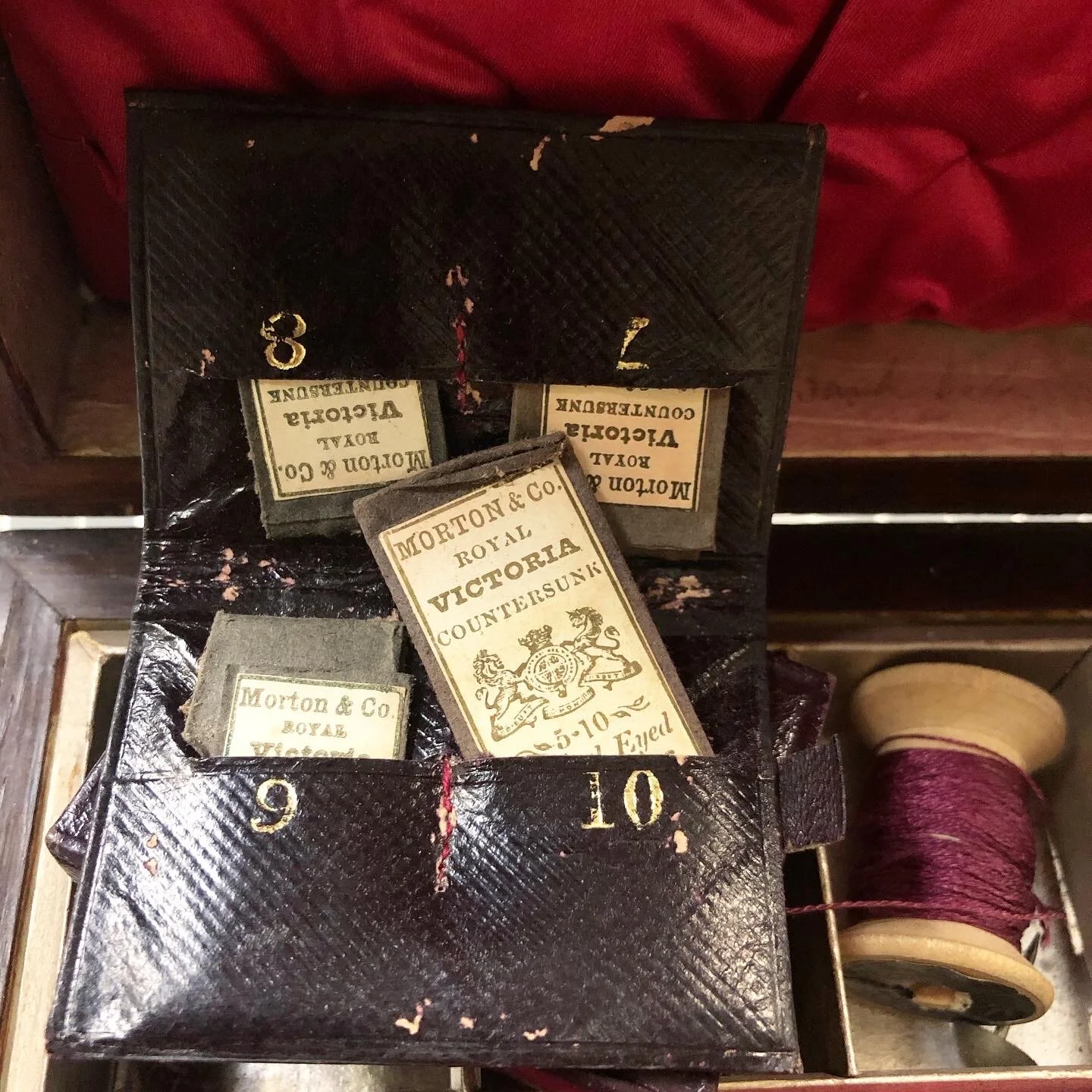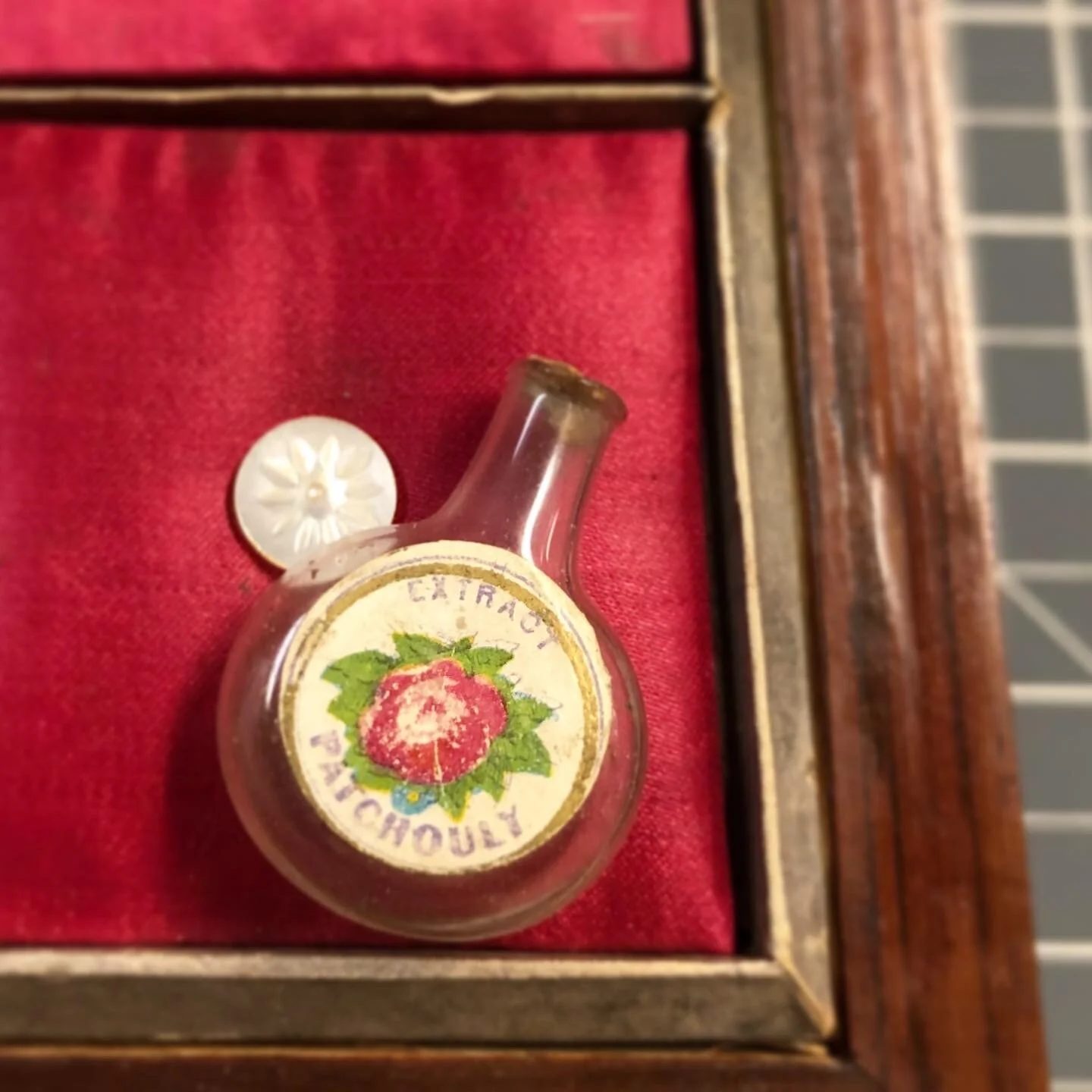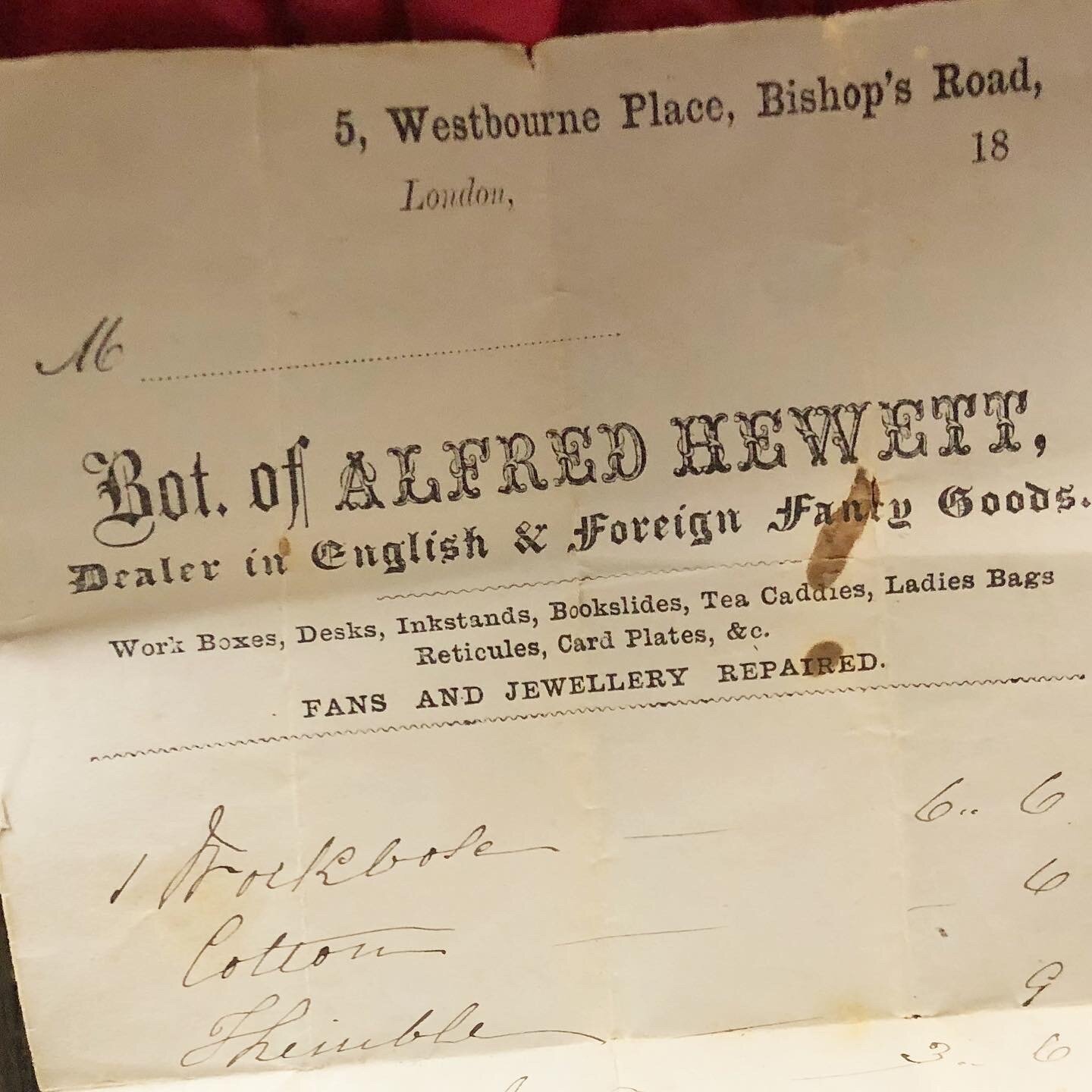Collection Musings: My Favorite Object at Camron-Stanford House
This is by far one of my favorite pieces at Camron-Stanford House. It is a sewing box that was purchased as a gift for CSH resident darling, Franklina Bartlett (née Gray).
I found this box in the attic storage area about two years ago, when I was an intern working on an inventory project. I was amazed to open it and find it was a time capsule and treasure trove all in one. Aside from the lovely sewing supplies, the box also holds the original purchase receipt for the box from a merchant in London. It holds ribbons with handwritten notes attached that indicate they were from Franklina’s graduation from Patapsco Female Institute. There’s a sweet, tiny, tintype photo of an unknown friend. The littlest bottle of Patcholi extract with the teeniest tiniest cork. A handful of star confetti cut from metallic paper, kept for some sentimental reason, I’m sure.
After discovering the box, it sat in storage for a while longer as we weren’t quite at a place where we could process it in the way we needed to. After settling in as Registrar, I finally had time to sit down and give this treasure the proper attention.
An important part of collections management and museum registration is maintaining accurate records. We want to record what we have and what we know about it. This part is (relatively) easy. It involves counting, describing, and listing all the things. Between all the slips of paper, ribbons, trimmings, and pins, this object record currently lists over 80 pieces. Trust me when I say that this little box holds one long and complicated objects record and condition report!
Since this box was a gift from a descendent of Franklina, it is possible that the items were moved from compartment to compartment over time as her family held it in their care and assessed its contents themselves. Despite that, I felt it was worthwhile to record the state of the box at the time it was found and cataloged. To do this, I assigned reference codes to each individual compartment and listed each individual piece found in each compartment. I took photos to record as best I could how it existed in its “found” state.
Knowing how meaningful this could be as a piece in our period rooms, I was faced with another conundrum. Is it better to preserve its found state and leave the items conceled within the box, or do I allow pieces to be moved about to create a better experience for visitors? A lot of (probably too much) thinking went into this. If the individual parts were left by Franklina in particular spots, that could be meaningful to the experience of this box. However, because we don’t let visitors touch most object, leaving them concealed within would not allow them to be viewed. Pictures could help, but it’s not quite the same, is it? Ultimately I decided it was ok to move move and restate the individual parts. I could not confirm that the parts were placed by Franklina herself. And the box is much more valuable when the individual pieces could be seen in person. I felt comfortable with the level of recording of its original state. So the box could be staged based on what story we wanted it to convey and how we wanted it to support the narratives of our exhibits and tours.
The box is now finally on display. Visitors can come in and see it in the Family Parlor at Camron-Stanford House. It sits on a desk and is open to show some of the more interesting treasures inside. It’s a wonderful addition to our period rooms and makes the characters in our house seem more real and personable. I’m so excited that it’s available for visitors to see for themselves.

